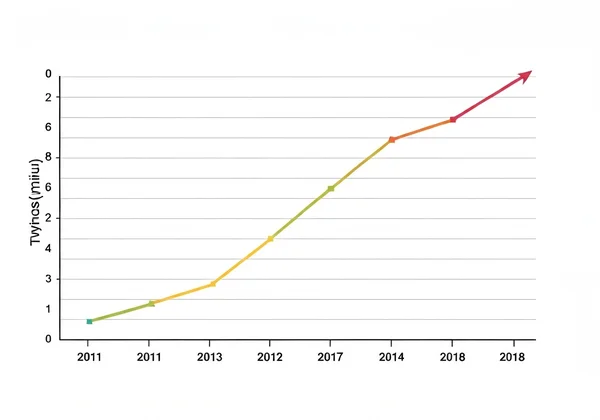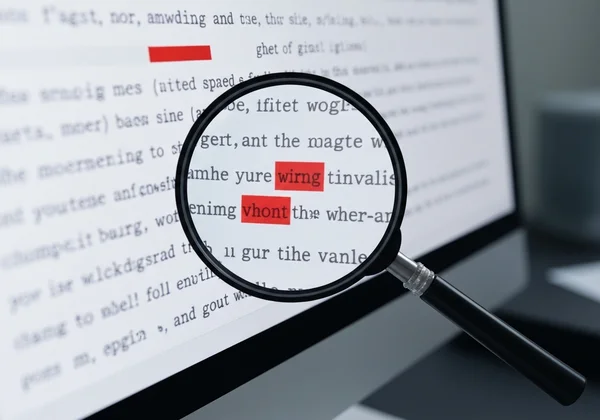Advanced Typing Drills: Break Your WPM Plateau & Boost Speed
Feeling stuck at a typing speed plateau? You're not alone. This guide offers advanced typing drills and targeted strategies to help you break through your WPM barrier. The answer to how to improve typing speed isn't just repetition; it's deliberate, focused practice designed to refine your technique.
These exercises focus on rhythm, finger independence, and error analysis. Get ready to transform your typing with a powerful typing speed test that serves as your ultimate practice ground.
Understanding Your WPM Plateau: Why You're Stuck
A typing speed plateau occurs when your ingrained muscle memory stalls your progress. Your fingers are on autopilot, but that autopilot has reached its maximum speed. To break through, you must identify and fix the hidden inefficiencies in your technique that are holding you back.
Identifying Common Typing Habits & Bottlenecks
Before you can improve, you need to know what's wrong. Common bottlenecks include uneven pacing, over-reliance on strong fingers, poor posture, or not returning to the home row. The first step is to observe yourself during a WPM test online and note where you slow down or make mistakes.
The Crucial Link Between Accuracy and Speed for Improvement
Don't just focus on speed; this leads to more errors and time wasted on backspacing. The fastest typists are incredibly accurate. True speed comes from building precision. By prioritizing accuracy, you develop clean, reliable muscle memory, which allows your speed to increase naturally and sustainably.

Rhythm Typing: Syncing Your Fingers for Fluidity
One of the most effective advanced techniques is rhythm typing. Instead of typing in short, frantic bursts, the goal is to maintain a steady, consistent cadence. This smooths out your typing, reduces errors, and makes your keystrokes far more efficient by eliminating the awkward pauses that cause typos.
Drills for Consistent Keystrokes & Pacing
Develop rhythm with simple, repetitive drills. Use memorable sentences like "the quick brown fox jumps over the lazy dog," focusing on evenly spaced keystrokes rather than speed. Consistency is key, and simple patterns work best for initial practice.
Using a Metronome to Master Your Typing Cadence
For a structured approach, use a metronome app. Set a slow tempo (e.g., 60 BPM) and type one character per beat. Focus on hitting the key exactly on the click. Once you can do this comfortably with high accuracy, gradually increase the BPM. This exercise builds a new foundation of consistent, rhythmic keystrokes.

Boosting Finger Independence & Strength with Targeted Drills
Your hands are not created equal; some fingers are naturally stronger than others. A major roadblock to higher WPM is when weaker fingers can't keep up. Finger independence exercises are designed to strengthen each finger individually, ensuring they can all perform their jobs quickly and accurately.
Exercises to Strengthen Weak Fingers and Reduce Strain
Focus on drills that target your non-dominant fingers. Create custom practice texts that heavily feature letters typed by your pinky and ring fingers (e.g., "q, a, z, p"). Type sequences like "aza aza" or "p;l p;l" slowly and deliberately to build strength and confidence. This reduces overall hand strain and makes complex words much easier to type.
Mastering High-Frequency Letter Combinations & Common Words
English has common letter patterns like "th," "er," and "ing." Practicing these trains your fingers to type them as a single fluid motion. Use the custom text feature on our typing speed test platform to create drills filled with these patterns, which will dramatically improve your overall speed.

Error Pattern Analysis: Refining Accuracy for Speed Breakthroughs
To achieve a true speed breakthrough, you must become a detective and investigate your mistakes. Don't just correct errors—analyze them. Identifying your unique error patterns is the first step toward eliminating them for good and achieving a major typing speed breakthrough.
How to Identify and Correct Your Most Frequent Typing Mistakes
After completing a keyboarding test, review your results carefully, paying attention to the highlighted errors. Keep a log of your most common mistakes. If you often mistype "teh" instead of "the," create a custom drill by practicing "the the the" until the correct motion becomes second nature.
Prioritizing Precision: The Ultimate Path to Faster, Reliable Typing
Every error corrected is a step toward higher WPM. Aim for an accuracy rate of 98% or higher in all your practice sessions. Once you can maintain that level of precision, you will see your speed begin to climb effortlessly. Accuracy is the rock-solid foundation upon which elite typing speed is built.

Advanced Strategies for a Sustainable Typing Speed Breakthrough
Breaking your plateau requires smart techniques and a consistent mindset, not just more practice. Adopting advanced strategies like deliberate practice ensures that every minute you spend at the keyboard contributes directly to your improvement, leading to a sustainable typing speed breakthrough.
The Power of Deliberate Practice and Focused Sessions
Deliberate practice means working on specific skills just outside your comfort zone. Instead of mindlessly typing for 30 minutes, break your practice into focused 5-minute sessions. In one session, work on rhythm with a metronome; in the next, run a drill for weak fingers. Then, take a free wpm test to see how those skills integrate. This approach is far more effective.
Integrating Custom Texts & Multi-Language Practice
Using custom texts makes practice directly relevant to your daily tasks. Programmers can drill with code snippets, while students can use passages from textbooks. Furthermore, if you're bilingual, practicing in multiple languages can improve cognitive flexibility. Our online typing test supports numerous languages, making it an ideal platform to measure your progress across different linguistic keyboards.
Your Journey Beyond the Typing Plateau Starts Now
Breaking a WPM plateau requires targeted exercises focused on rhythm, finger independence, and precise error analysis. By adopting these advanced drills, you can retrain your muscle memory, eliminate hidden inefficiencies, and unlock new levels of typing speed and accuracy.
Ready to put these advanced drills to the test? Head over to our free WPM test now to practice with custom texts, track your progress, and finally achieve that typing speed breakthrough you've been working towards.
Frequently Asked Questions About Breaking Your WPM Plateau
How can I accurately test my typing speed and identify my plateau?
Use a reliable online tool. Our platform provides a standardized WPM test with detailed results, including your WPM and accuracy rate. To identify a plateau, take the test regularly. If your WPM score remains stagnant across multiple sessions despite practice, you've likely hit one. The tool's error highlighting will show exactly which patterns are slowing you down.
Is 70 WPM considered a good typing speed, or should I aim higher?
A typing speed of 70 WPM is very good and is faster than the average typist (around 40 WPM). Whether you should aim higher depends on your goals. For professions like programming or transcription, pushing for 80-100+ WPM can significantly boost productivity. For casual users, 70 WPM is an excellent target. You can always check your score to see where you stand.
What is the average typing speed for professionals and students aiming to improve?
The average typing speed is around 40 WPM. For professionals in keyboard-intensive jobs, a speed of 60-75 WPM is often the standard. Students also benefit from reaching this range. Those actively trying to improve should first aim to consistently beat the 40 WPM average and then set incremental goals, like reaching 60 WPM with over 98% accuracy.
How important is accuracy when focusing on increasing my WPM?
Accuracy is the single most important factor for sustainably increasing your WPM. Correcting errors takes more time than typing correctly at a slightly slower pace. Focusing on achieving 98%+ accuracy builds a solid foundation of muscle memory. Once your fingers type correctly by instinct, your speed will naturally increase. You can monitor both metrics with a good words per minute test.